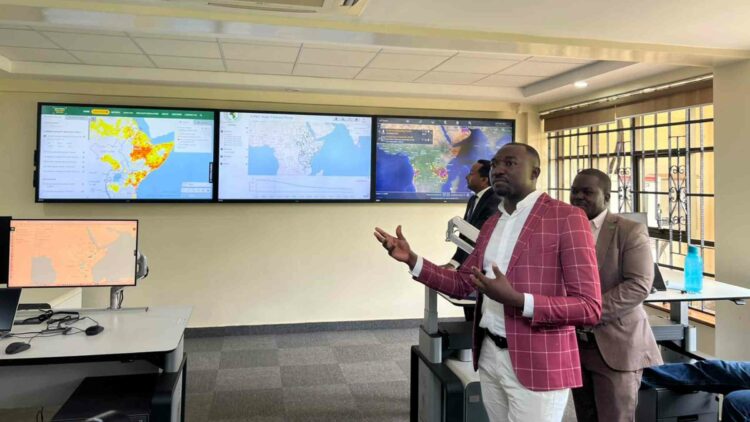From 12 to 14 March 2024, the annual Co-production and Coordination Meeting of the Africa Multi- Hazard Early Warning and Action System (AMHEWAS) was organized by the African Union Commission (AUC) and the United Nations Office for Disaster Risk Reduction (UNDRR) in Nairobi, Kenya. The meeting gathered 40 participants from 14 organizations, comprised of representatives from the AUC and Regional Economic Communities, and the governments of Ethiopia, Mozambique Namibia, Tanzania, as well as the United Nations Development Programme (UNDP). Discussions focused on enhancing the co-production of early warning products based on user needs in Africa that can be utilized by decision makers to take early actions.
The AMHEWAS programme started in 2022. It aims to ensure the availability of and access to multi-hazard early warning systems and disaster risk information as well as to intensify the coordination of transboundary disaster risk management, to effectively address the challenges posed by climate and disaster risks. AMHEWAS meets the call of the United Nations Secretary-General for everyone on Earth to be protected by early warning systems through the Early Warnings for All initiative.
In his opening remarks, the Chief of the UNDRR Regional Office for Africa, Mr. Amjad Abbashar, stressed the role of the AUC in tackling these challenges:
“Under the leadership of the African Union Commission, much progress is being witnessed in Africa. The Africa Multi-Hazard Early Warning and Early Action System Programme is a notable initiative that responds to the escalating disaster-related losses and damages across the continent.” – Amjad Abbashar, Chief of the UNDR Regional Office for Africa,
He also highlighted the successes achieved thus far, including the establishment of four situation rooms and over 400 advisories to Member States.
Mr. Antonio Beleza, Programme Officer for Monitoring and Early Warning at the Southern Africa Development Cooperation (SADC) Humanitarian Emergency Operations Centre (SHOC), said “Regarding the tropical cyclone Filippo that was going to hit Mozambique, we had the forecast, the advisory from the Climate Services Centre and then we produced our advisory to Member States saying this is what we expect in the next days about the risk.”
Mozambique’s National Institute for Disaster Management triangulated the information provided by SADC and the AUC. To track the cyclone trajectory, AMHEWAS members use a real-time integrated system designed for the prediction, monitoring and prevention of weather-related disasters in order to take anticipatory actions. The Institute activated the local emergency operation centres, early warning messages were disseminated, boats and drones were prepositioned, accommodation centres were identified, and people moved away from at-risk locations.
During the Co-Production and Coordination Meeting, participants agreed on improving the integration of products and information that is generated. For example, the African Drought Watch, is a new tool currently being developed that uses the African Centre of Meteorological Application for Development ACMAD’s combined drought indicator, which integrates information on precipitation, soil moisture, and reduction in vegetation. AMHEWAS. Finally, participants identified training needs to improve interoperability and peer to peer and South-South learning opportunities.
UNDRR and UNDP reiterated their commitment to support the AMHEWAS and work together to optimize resources and avoid duplication.
Closing the meeting, Mr. Harsen Nyambe, Director of Sustainable Environment and Blue Economy at the AUC, invited all the members to “Keep our eyes on the target: to provide early warnings to our communities and be able to save lives”.
The AMHEWAS co-production meeting was made possible thanks to funding from the Government of Italy.
Source link : http://www.undrr.org/news/accelerating-deployment-impact-based-early-warning-products-africa
Author :
Publish date : 2024-04-16 07:00:00
Copyright for syndicated content belongs to the linked Source.




